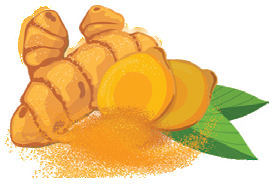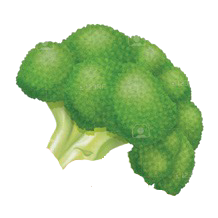POLIFEN U
Dietary supplement
for the prostate
ABOUT PRODUCT
Polifen U is a food supplement containing plant polyphenols of natural origin from various categories: vegetables – broccoli, fruits – pomegranate, herbs – green tea and spices – turmeric, which have a beneficial effect on the functioning of the prostate. It is used to supplement a varied diet with natural polyphenols.
Various dietary ingredients, including polyphenols, have anti-cancer properties*. Epidemiological studies have confirmed that increased consumption of polyphenols found in fruits, vegetables, some spices, soy and its products, red wine or green tea significantly reduces the risk of prostate cancer**.
In addition to possessing various anti-cancer properties, dietary polyphenols also contribute to epigenetic changes related to the fate of cancer cells and have emerged as a potential therapeutic option.***
*Dietary Polyphenols in Prevention and Treatment of Prostate Cancer, Rahul K. Lall, Deeba N. Syed, Vaqar M. Adhami, Mohammad Imran Khan, and Hasan Mukhtar, Int J Mol Sci. 2015 Feb; 16(2): 3350–3376.
** Naturalne polifenole w chemoprewencji raka gruczołu krokowego – od badań podstawowych do testów klinicznych, Ewelina Szliszka, Przegląd Urologiczny 2012/5(75)
****Dietary Polyphenols in Prevention and Treatment of Prostate Cancer, Rahul.K.Lall, Deeba N. Syed, Vagar M.Adhami, Mohammad Imran Khan, Hasan Mukhtar, Int J Mol Sci, 2015 Feb; 16(2): 3350–3376.
POLYPHENOLS
What are polyphenols?
Polyphenols are a group of compounds with antioxidant properties that help neutralize free radicals. They are found in fruits, vegetables, nuts, legumes, but also in coffee, tea and cocoa.
They can be divided into groups depending on the number of phenol rings and the structural elements connecting these rings, and we distinguish them as follows:
• Polyphenols
Flavonoids
Flavones (e.g. apigenin, luteoin, diosmin)
Chalcones (e.g. phloretin nargina)
Flavonones (e.g. narygenin, hesperidin, hesperetin, narginine)
Flavonols (e.g. catechin, epicatechin, epigallocatechins)
Flavonols (e.g. quercetin, fistein morin, myrcetin, kaempferol, rutin)
Anthocyanidins (e.g. cyanidin, pelargonidin, malvidin)
Isoflavones (daidzein, genistein)
phenolic acids (derivatives of cinnamic and benzoic acid)
Other non-flavonoid polyphenols
Curcuminoids (e.g. curcumin)
Stilbenes (e.g. cinnamic acid, reservatol)
Ligans (e.g. secoisolariciresinol, enterolactone, sesamin)

Action of polyphenols:
Antioxidant effect – reduce the undesirable effects of reactive oxygen species (free radicals), accelerate the repair of damaged tissues and cells, support the regeneration of the body, delay the aging process.
Anti-inflammatory effect – the mechanism of action of flavonoids is based on blocking the cyclooxygenase and lipoxygenase enzyme pathway, thanks to which the synthesis of pro-inflammatory prostaglandin (PGE 2) is inhibited. Quercetin, hesperidin and rutin have the greatest anti-inflammatory activity.
Antiallergic effect – flavonoids, by inhibiting the release of histamine and the synthesis of interleukins IL-13, IL-4, can prevent the occurrence of allergic diseases, including: rhinitis or atopic dermatitis.
Antibacterial effect – flavonoids have a bacteriostatic and bactericidal effect and can inhibit the adhesion of bacteria that are responsible for the occurrence of infections of the gastrointestinal tract and urinary tract. Anthocyanins, i.e. organic compounds contained in red and purple plants (blueberries, raspberries, strawberries, cherries, pomegranates), have the greatest bactericidal activity.
Antiviral effect – polyphenols have the ability to act against some viruses. Quercetin and fistein are highly active in inhibiting the activity of viruses.
Anticancer effect – polyphenol compounds reduce the risk of developing cancer. Especially flavonoids, substances with a bitter taste, are treated as food ingredients with potential anti-cancer properties. They work by blocking the cell cycle of cancer cells, inhibiting angiogenesis and inducing apoptosis, i.e. the natural death of cells changed by cancer.
HEALTH BENEFITS
Pomegranate fruit
Pomegranate fruit and its individual parts (seeds, juice, peel) are a source of bioactive compounds with beneficial physiological effects.
Numerous in vitro experiments, as well as studies on animal models and humans, have demonstrated many health-promoting properties of pomegranate, including:
– lowering blood sugar levels,
– anti-cancer,
– antibacterial,
– antioxidant,
– cardioprotective*

* Kulczyński, B., Gramza-Michałowska, A. (2015). Granat – tropikalny owoc bogaty w związki bioaktywne o właściwościach prozdrowotnych. Nauka Przyr. Technol., 9, 3, #41. DOI: 10.17306/J.NPT.2015.3.41
Turmeric root
Turmeric root contains curcuminoids, the most famous of which is curcumin. Due to its characteristic yellow color, it is successfully used as a food coloring.
It is used in the treatment of various pathological conditions. This is due to its properties, including:
- anti-inflammatory,
- antioxidants,
- anti-cancer,
- antirheumatics,
- antimicrobial
- and antidiabetic.*

*Malwina Lachowicz, Andrzej Stańczak, Michał Kołodziejczyk, Kurkumina – naturalny polifenol o wielu właściwościach – rozwiązania technologiczne wspomagające farmakoterapię, Farmaceutyczny, Uniwersytet Medyczny w Łodzi, Polska
Broccoli
Broccoli contains natural isothiocyanate – Sulforaphane (SFN)
The protective properties of SFN were observed in all phases of the carcinogenesis process.
The mechanism of protection against the initiation of carcinogenesis by SFN includes modulation of enzymes metabolizing phase I and II xenobiotics, as well as direct blocking of specific binding sites of carcinogens to the DNA molecule. As a result, sulforaphane inhibits the formation of DNA adducts, thereby reducing the risk of mutations.
Additionally, SFN activity targets cancer cells. The compound has been shown to prevent their expansion by interfering with cellular processes including proliferation, differentiation and apoptosis.
In response to higher concentrations of SFN, apoptotic death pathways were activated.
The possibility of using SFN against invasive tumors has been supported by in vitro studies, indicating its antiangiogenic and antiproliferative effects.
An additional protective mechanism of this compound, important in cancer prevention, may consist in its anti-inflammatory and antibacterial effects. *

*Tomczyk J. i Olejnik A. Sulforaphane – a possible agent in prevention and therapy of cancer , Postepy Hig Med Dosw (online), 2010; 64: 590-603 e-ISSN 1732-2693
Green tea
Among the large group of biologically active compounds contained in green tea, catechins are the most abundant, in particular epigallocatechin gallate (EGCG).
The results of experimental, epidemiological and clinical studies provide much evidence for the health-promoting properties of green tea polyphenols.
They indicate, among other things, their operation:
• anti-tumor,
• anti-atherosclerosis,
• anti-neurodegenerative,
• preventing overweight
• and slowing down the body’s aging process.
So far, the anticancer effect of green tea catechins has been observed on, among others, prostate, breast, esophagus, stomach, pancreas and colon cancer.*

*Jarosław Całka, Arkadiusz Zasadowski, Judyta Juranek NIEKTÓRE ASPEKTY LECZNICZEGO DZIAŁANIA ZIELONEJ HERBATY, BROMAT. CHEM. TOKSYKOL. – XLI, 2008, 1, str. 5–14
PROSTATE CANCER
Prostate cancer/Prostate cancer/Prostate cancer is a malignant tumor that develops in the prostate gland (also known as the prostate gland).
A number of disease processes may occur in the prostate, both minor hyperplasia and cancer, which may be benign or malignant. The most common type of prostate cancer is adenocarcinoma, which occurs in 95% of cases. cases.
In Poland, prostate cancer already constitutes approximately 20%. all diagnosed malignant tumors. This means that every fifth man struggling with oncological disease suffers from prostate cancer.
The probability of developing the disease increases with age, and the peak incidence occurs between the ages of 60 and 70, although much younger men are also affected. A high-protein diet, obesity, drinking alcohol, lack of physical activity, and genetic predisposition may contribute to the development of cancer. – Having prostate cancer in a first-line family member increases the risk by up to 2-3 times.
Prostate cancer usually develops asymptomatically for a long time or causes only slight symptoms resembling symptoms typical of benign prostatic hyperplasia (frequent urination (frequent urination), the need to interrupt sleep to urinate (nocturia), the need to urinate urgently, which is difficult to control). urine (urgency), feeling of incomplete evacuation after urination and passing urine in a narrow stream). Sometimes the symptoms include hematuria. As the tumor grows, urine may become stagnant in the bladder, and then even hydronephrosis and renal failure may occur.
Prostate adenocarcinoma, like any malignant tumor, may metastasize to nearby lymph nodes (most often it affects characteristic groups of lymph nodes in the pelvis) and to distant organs (a characteristic feature of this tumor is the formation of bone metastases; less frequently, metastases to the lungs, brain and liver).
The choice of treatment method depends on many factors: the stage of the disease, risk assessment (based on PSA levels and Gleason score), patient’s age and expected survival time.
There are three main methods of treating this cancer: surgery (prostatectomy), radiotherapy and systemic treatment (hormone therapy or classic chemotherapy). The surgery is used primarily in patients whose expected survival time is over 10 years (so this method is not recommended for elderly men) and the tumor does not exceed the anatomical limits of the prostate gland (so-called organ-limited disease).
PSA – Prostate specific antigen. The PSA test is used to detect prostate cancer, even in its early stages, when the cancer does not yet cause symptoms. It is assumed that a normal total PSA result should not exceed 4 nanograms per milliliter of blood (ng/ml). High PSA (exceeding 10 ng/ml and often above 20 ng/ml) and an increase in antigen concentration in a short time, regardless of age, means a high risk of developing prostate cancer – about a 60% chance.
PROSTATE CANCER – CHEMOPREVENTION
Numerous preclinical studies on cell cultures and animal models, as well as clinical trials, have allowed for the initial selection of natural factors that are components of the daily diet and are capable of reducing the risk of developing prostate cancer.
The most important of them include:

catechins (epigallocatechin gallate)
isoflavones (genistein, daidzein, biochanin-A, equol)

anthocyanidins (pelargonidin, cyanidin, delphinidin)
ellagitannins (derivatives of ellagic acid: geranin, corilagin, punicalin, punicalagin, punicafolin, punicacorteins, garnanin)

curcuminoids (curcumin)
stilbenes (resveratrol)
*Naturalne polifenole w chemoprewencji raka gruczołu krokowego – od badań podstawowych do testów klinicznych, Ewelina Śliszka, Przegląd Urologiczny 2021/5 (75)
EFFECT OF POLYPHENOLS ON PROSTATE CANCER
Epidemiological studies have confirmed that increased consumption of polyphenols found in fruits, vegetables, some spices, soy and its products, red wine or green tea significantly reduces the risk of prostate cancer.
In vitro and in vivo studies on prostate cancer have shown that the anticancer activity consists of various effects and directions of action of polyphenols, such as:
• modulation of genes and/or proteins regulating the cell cycle,
• apoptosis,
• angiogenesis
• and xenobiotic metabolism
*Naturalne polifenole w chemoprewencji raka gruczołu krokowego – od badań podstawowych do testów klinicznych, Ewelina Śliszka, Przegląd Urologiczny 2021/5 (75)
A clinical study assessing the effect of a dietary supplement rich in polyphenols (containing broccoli flowers and stems, pomegranate, turmeric rhizome and green tea extract) on PSA progression in men with prostate cancer showed a statistically significant short-term beneficial effect on the percentage increase in PSA in men treated with with AS (active surveillance) and WW (watchful waiting) compared to placebo. Significantly more men remained on AS or WW, avoiding the toxicity and costs of medical interventions
*A double-blind, placebo-controlled randomised trial evaluating the effect of a polyphenol-rich whole food supplement on PSA progression in men with prostate cancer–the U.K. NCRN Pomi-T study, R.Thomas, M.Williams, H.Sharma, A.Chaudry, P.Bellamy, Prostate Cancer Prostatic Dis. 2014 Jun, 17(2):180-6 doi:10.1038/pcan.2014.6 Epub 2014 Mar 11
Address
F.Klimaczaka 17/80
02-797 Warszawa